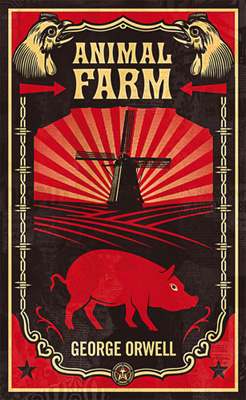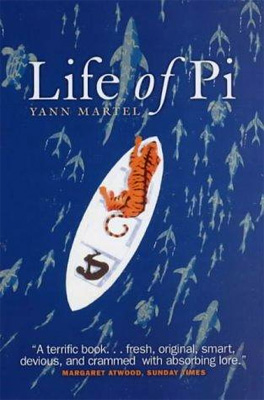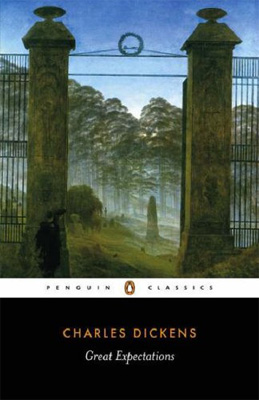We collected input from hundreds of visitors to the site to compile the list of the 100 Greatest Books of All Time. You can see the beginning of the project here, where you’ll also find an index of all the results to date.
40. The Master and Margarita by Mikhail Bulgakov
Mikhail Bulgakov’s Soviet satire, first published in 1967 as a single volume, is a Faustian novel that weaves philosophy with humor as the Devil pays a visit to the Soviet Union in the 1930s.
39. Animal Farm by George Orwell
Paige MacGregor: In Animal Farm, which was first published in August 1945 (Orwell couldn’t find a publisher for several years prior to 1945 due to the inflammatory and controversial nature of the text), George Orwell uses a well-crafted allegory to attack the Soviet regime in power during WWII and criticize the government for aiding Adolf Hitler and Germany in the war. Animal Farm struck a particular chord with readers in the post-WWII climate and made George Orwell a highly sought-after writer who went on to have a long career as an author.
Adam Black: Animal Farm is a great treatise on social revolution and its pitfalls.
38. Life of Pi by Yann Martel
Canadian author Yann Martel wrote Life of Pi as a fantasy story about an Indian boy stranded on a lifeboat in the Pacific Ocean. It first saw publication in 2001 and has become a popular novel that has attracted many fans, as well as the attention of a number of producers who have adapted the book into stage format and who have shown interest in bringing it to movie screens.
37. Lord of the Flies by William Golding
William Golding’s classic allegorical novel about British boys stranded on an island and forming their own rules and culture was published in 1954. It bears distinction, in addition to its own merits, as being one of the most controversial and challenged books in modern history.
36. Great Expectations by Charles Dickens
Paige MacGregor: One of many famous works written by Charles Dickens, Great Expectations is a “bildungsroman,” or a novel that depicts the growth and personal development of one of its characters. Great Expectations is often assigned to middle and high school students as a tool for examining the concepts of crime, social class, and ambition. The novel was first published in serial form in All the Year Round between December 1860 and August 1861. Since its initial release, Great Expectations has enjoyed more than eighteen major adaptations ranging from stage performances to television series and films. Although the story may seem outdated to contemporary readers, the novel’s themes are easily generalized, making Great Expectations a timeless classic.
Previous five: #45-41
The list continues tomorrow with #35-31.











